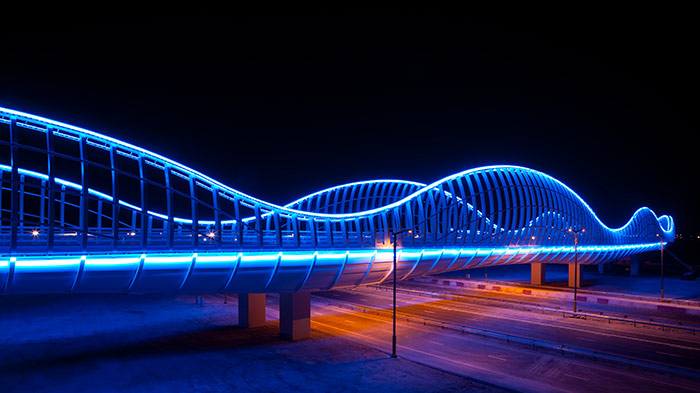Bridge lighting design plays a very important role in urban beautification, increasing safety, and creating stunning visual effects. Proper lighting can transform a simple bridge into a work of art and provide a different experience for passers-by. Using modern technologies and creative ideas, bridge lighting can portray a sense of movement, dynamism, and liveliness at night.
In bridge lighting design, factors such as the surrounding environment, bridge usage, traffic type, and weather conditions must be considered. The correct selection of lighting equipment, the type and color of light, and how they are arranged will have a significant impact on the final result. By creating a balance between efficiency and beauty, bridge lighting can help improve the experience of passing through, increase the visual appeal of the city, and promote safety.
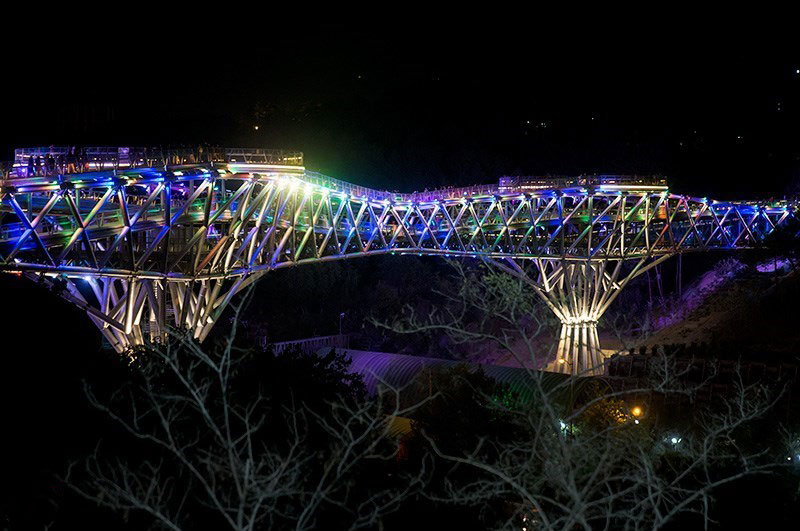
Various Bridge Lighting Techniques
Bridge lighting can be implemented in various ways, each offering unique and captivating visual effects. Below are some common techniques for bridge lighting:
- Linear Lighting: LED lights are installed linearly along the length of the bridge. This method creates uniform light lines and consistent brightness, especially suitable for long bridges, giving them a modern and sleek appearance.
- Spot Lighting: LED lights are placed at specific points on the bridge, such as pillars, columns, or other prominent features. This technique highlights the architectural design of the bridge, emphasizing specific focal points.
- Colored Lighting: LEDs with color-changing capabilities are installed along the bridge. This type is ideal for special events, celebrations, and occasions, allowing diverse and vibrant light effects by altering the colors.
- Under-Bridge Lighting: LEDs are mounted under the bridge, directing light upwards. This creates shadows and unique lighting effects underneath the bridge, adding a mysterious and distinctive ambiance.
- Comprehensive Lighting: LED lights are distributed throughout various parts of the bridge to ensure even illumination of all sections. This technique is effective for creating consistent brightness and enhancing safety for passersby.
- Dynamic Lighting: LEDs programmed to change color and brightness in specific patterns. This approach is particularly suited for animated light effects, transforming the bridge into a dynamic work of art.
- Accent Lighting: LEDs are used to emphasize specific points of the bridge, such as sculptures, symbols, or unique architectural details. This method enhances the details and creates visual focus.
- Concealed Lighting: LEDs are discreetly installed in hidden locations to ensure the light source is not visible, and only the effect is seen. This subtle lighting technique is ideal for creating delicate and understated visual effects.
Each of these lighting techniques can elevate the aesthetic appeal and functionality of bridges, tailored to the specific needs and characteristics of the structure.
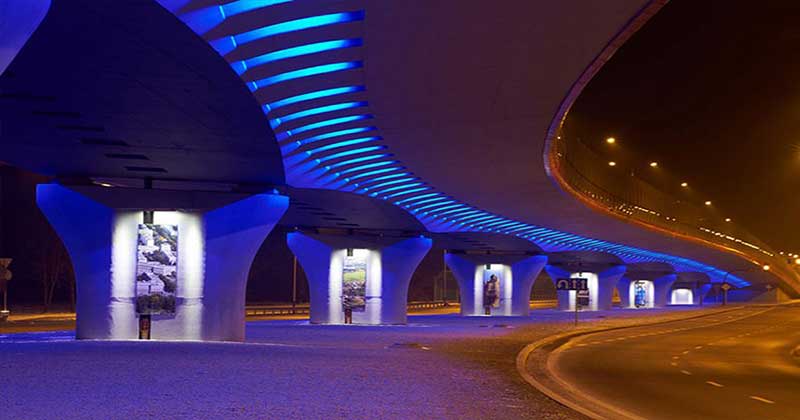
Elegant Design for Roadways and Bridges Lighting
The refined design of lighting for roadways and bridges plays a vital role in creating beauty, enhancing safety, and improving the experience for pedestrians and drivers. With the use of modern technologies and creative ideas, stunning and efficient lighting effects can be achieved, combining functionality and visual appeal. Below are some principles and techniques for elegantly designing roadway and bridge lighting:
- Choosing the Right Equipment:
- Utilize high-quality, efficient LED lights.
- Select weather-resistant fixtures suitable for outdoor environments.
- Ensuring Uniform Light Distribution:
- Guarantee even light distribution across roadways and bridges.
- Avoid unwanted shadows that may compromise safety.
- Attention to Light Color:
- Choose appropriate light colors for different environments, such as cool white for urban roads and warm light for recreational areas.
- Incorporate colored lights to create special and attractive visual effects.
- Energy Management:
- Use energy-efficient and low-consumption fixtures to reduce energy use.
- Implement smart lighting management systems to optimize energy consumption.
- Design Harmony with the Environment:
- Adapt lighting design to complement the architecture and surrounding area.
- Coordinate lighting for roadways and bridges with other urban elements to ensure seamless integration.
Elegant Lighting Design Methods
- Linear Lighting: Installing LED lights in a linear arrangement along bridges or pathways to achieve consistent and balanced illumination.
- Spot Lighting: Placing LED lights at specific prominent points like columns, bases, or unique architectural elements to highlight them effectively.
- Colored Lighting: Utilizing LED lights with color-changing capabilities to create diverse and captivating lighting effects, ideal for events and celebrations.
- Under-Bridge Lighting: Installing LED lights beneath bridges to shine upward, creating unique shadows and distinctive lighting effects.
- Concealed Lighting: Using hidden LED lights installed discreetly to produce subtle and refined lighting effects without revealing the light source itself.
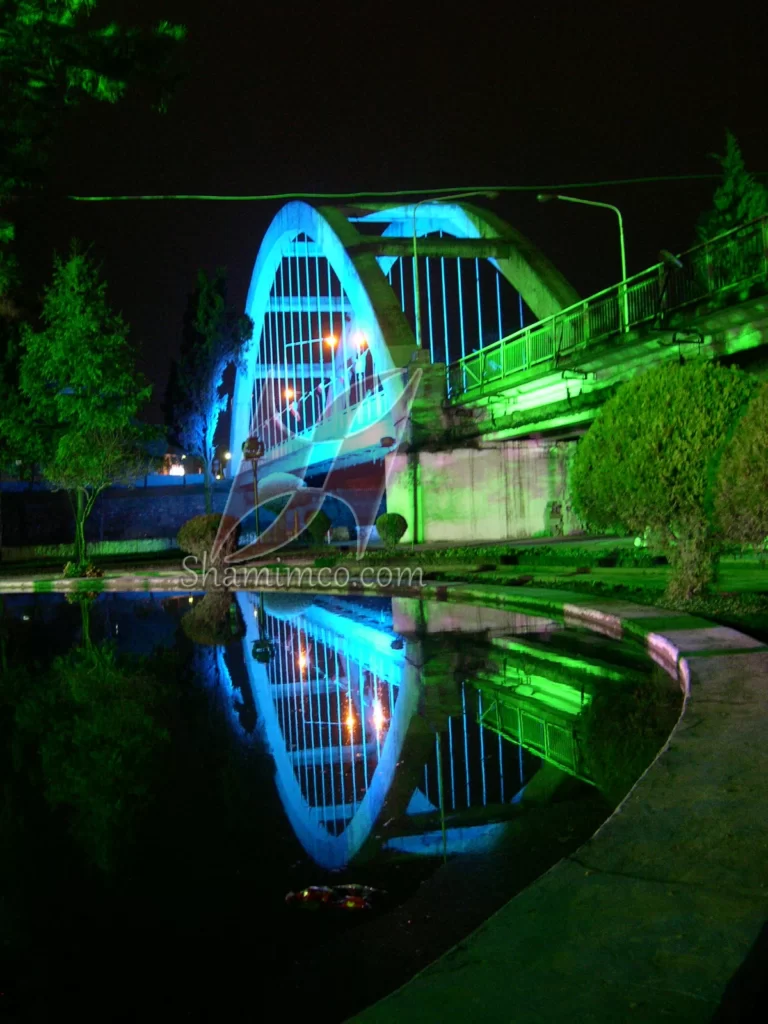
Lighting Historical Bridges
Illuminating historical bridges is both an art and a science, requiring precision and respect for their original architecture and cultural significance. These structures are not only engineering marvels but also vital pieces of a region’s history and heritage. Lighting design for such bridges should preserve their authenticity while enhancing their beauty with well-planned lighting effects.
- Preserving Architectural Authenticity:
- Employ lighting that does not harm the structure or intricate architectural details.
- Choose light colors and intensities that complement the materials and style of the architecture.
- Balancing Light and Shadows:
- Achieve a balance between illuminated and shadowed areas to enhance visual appeal and highlight architectural details.
- Use soft, gentle lights to avoid harsh shadows and glaring effects.
- Ensuring Safety and Comfort:
- Ensure the lighting design contributes to the safety of pedestrians and vehicles, preventing glare and discomfort.
- Install high-quality, efficient LED lights that provide appropriate illumination.
- Using Modern Technologies:
- Incorporate advanced technologies like LED fixtures, smart systems, and adjustable lights for diverse effects while conserving energy.
Lighting Techniques for Historical Bridges
- Accent Lighting: Installing LED lights at specific points on the bridge, such as bases, columns, and arches, to highlight architectural details and create focal points.
- Linear Lighting: Using LED lights in a linear arrangement along the bridge to form consistent light lines and balanced illumination. This approach is particularly suitable for emphasizing architectural and structural lines.
- Concealed Lighting: Placing LED lights in hidden and discreet locations to create subtle and elegant lighting effects. This method ensures that the light source itself is not visible, showing only the resulting illumination.
- Soft Colored Lighting: Employing gentle colored lights that harmonize with the bridge’s architecture and materials, creating attractive and coordinated effects. This technique is ideal for special events and celebrations.
- Under-Bridge Lighting: Mounting LED lights beneath the bridge, directing light upwards to create unique shadows and striking lighting effects. This method is especially effective for accentuating the architectural substructures of the bridge.
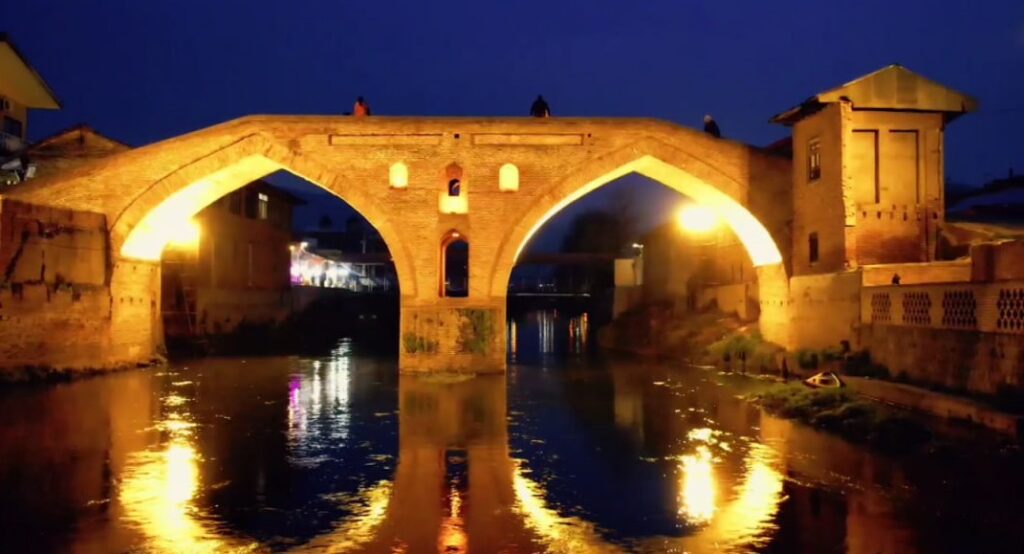
San Francisco Bay Bridge Lighting
The San Francisco Bay Bridge, also known as the Bay Bridge, stands as a global marvel of architecture and lighting. Connecting San Francisco to Oakland, this iconic bridge opened in 1936 and has since become one of the city’s symbols. Due to its historical and aesthetic significance, a unique and artistic lighting project was envisioned for the bridge.
The Lighting Project:
In 2013, a lighting initiative called “The Bay Lights” was launched by artist Leo Villareal. This ambitious project aimed to transform the bridge into an artistic masterpiece, and it lasted for two years.
Lighting Features:
- Number of Lights: The project involved installing 25,000 LED lights along the suspension cables of the bridge.
- Energy Consumption: LED lights were chosen for their energy efficiency, ensuring minimal environmental impact.
- Programmable Patterns: The LED lights were capable of being programmed to create diverse and mesmerizing light patterns, allowing for ever-changing displays.
Objectives and Impacts:
- Urban Beautification: The Bay Bridge lighting turned the bridge into a stunning nighttime canvas, enhancing the city’s overall aesthetic appeal.
- Tourist Attraction: The project attracted numerous tourists to San Francisco, making the Bay Bridge a key landmark for visitors.
- Cultural Enrichment: The artistic lighting promoted contemporary art and fostered a deeper appreciation for public cultural projects.
The dazzling illumination of the San Francisco Bay Bridge has transformed it into more than just an urban structure—it’s an experience of art and technology that enriches the lives of both residents and visitors alike. This project showcases the perfect blend of modern innovation and artistic expression.
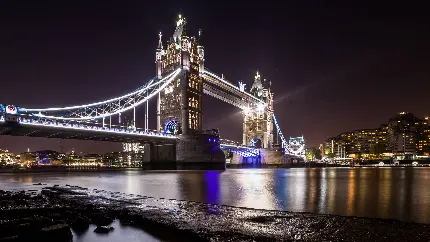
Contact Information for Shamim Andisheh
To get in touch with Shamim Andisheh Company or view their projects, you can use the following methods:
- Phone:
- Head Office: 021-44071011-12
- Email: You can send an email to: shamim@shamimco.com
- Website: Visit the official website of Shamim Andisheh to send inquiries:
- Social Media: Shamim Andisheh is active on platforms like Instagram and LinkedIn. You can also contact them via: 09394121002

 English
English العربية
العربية